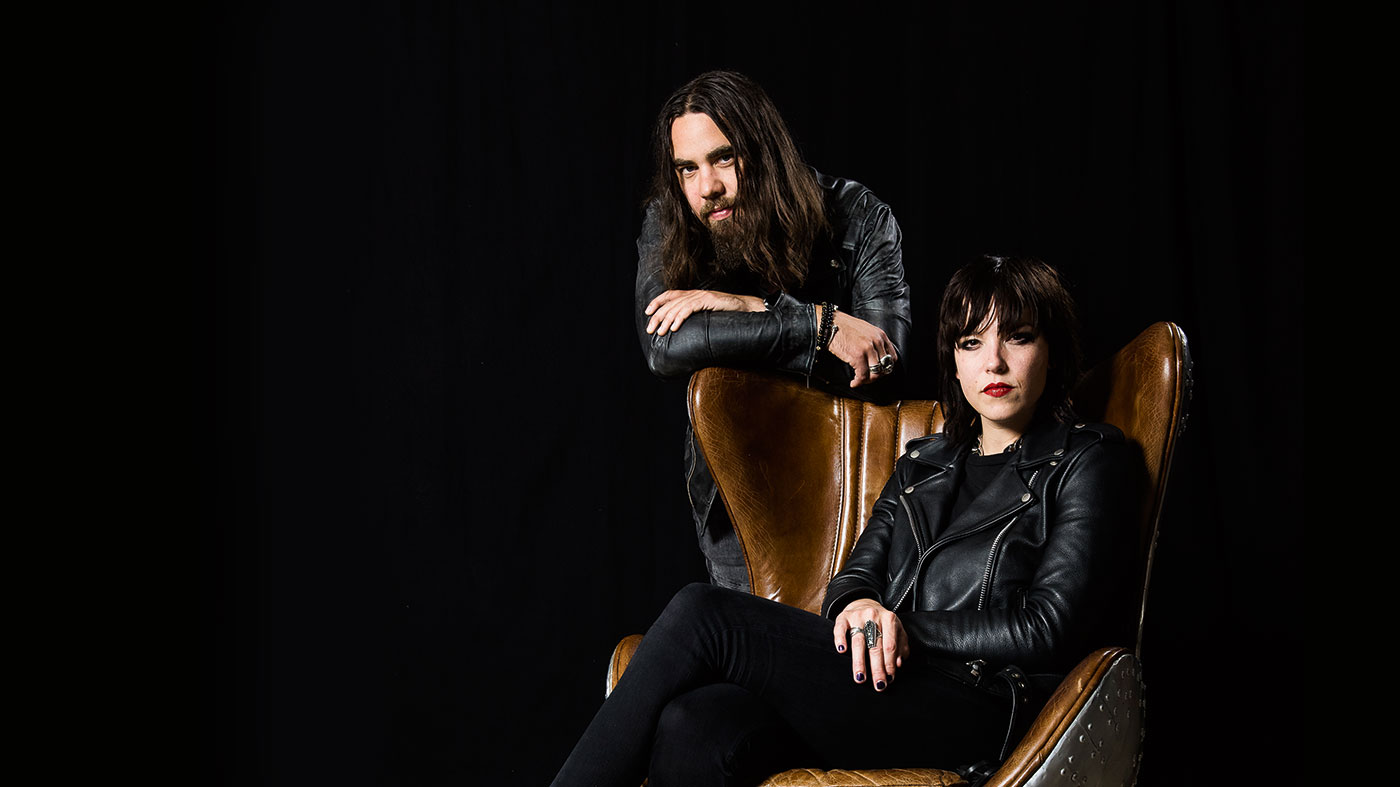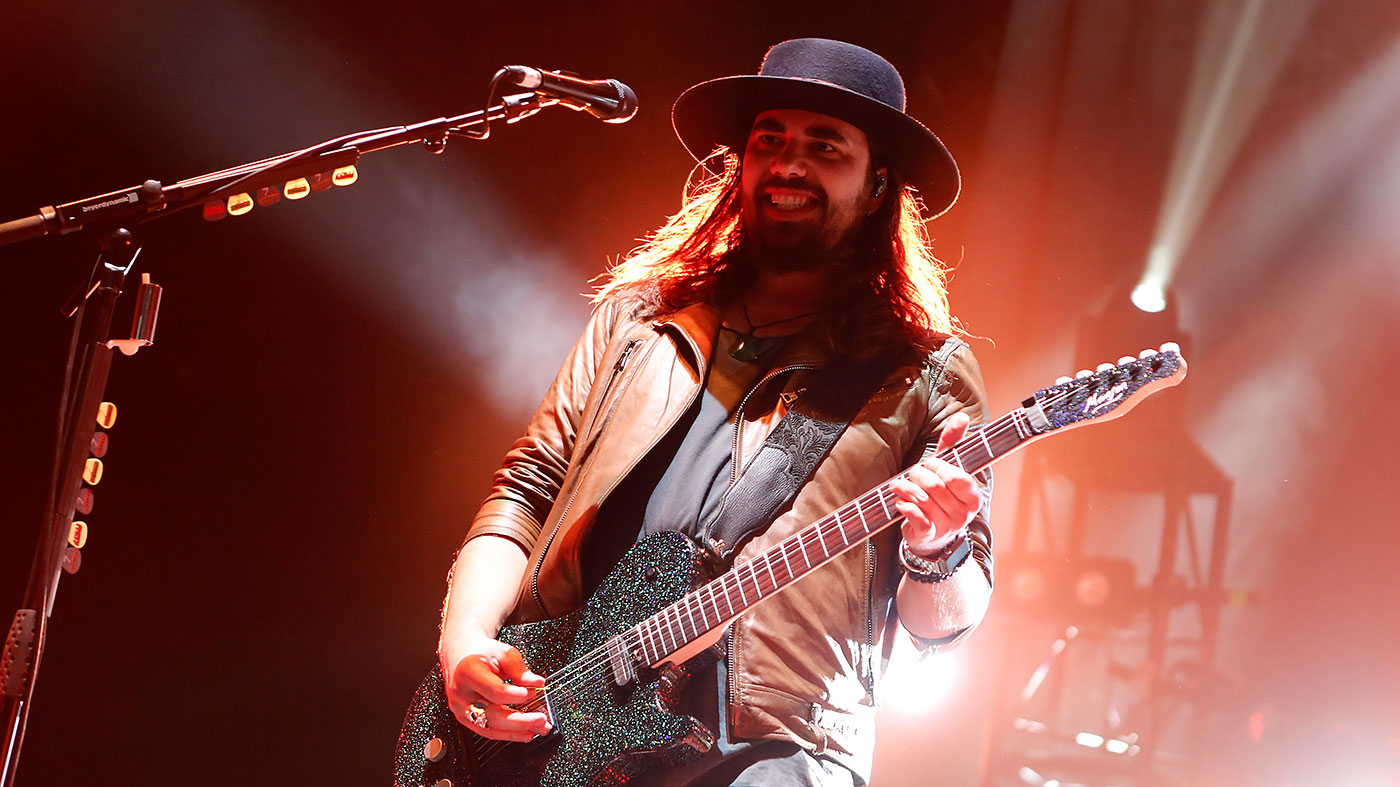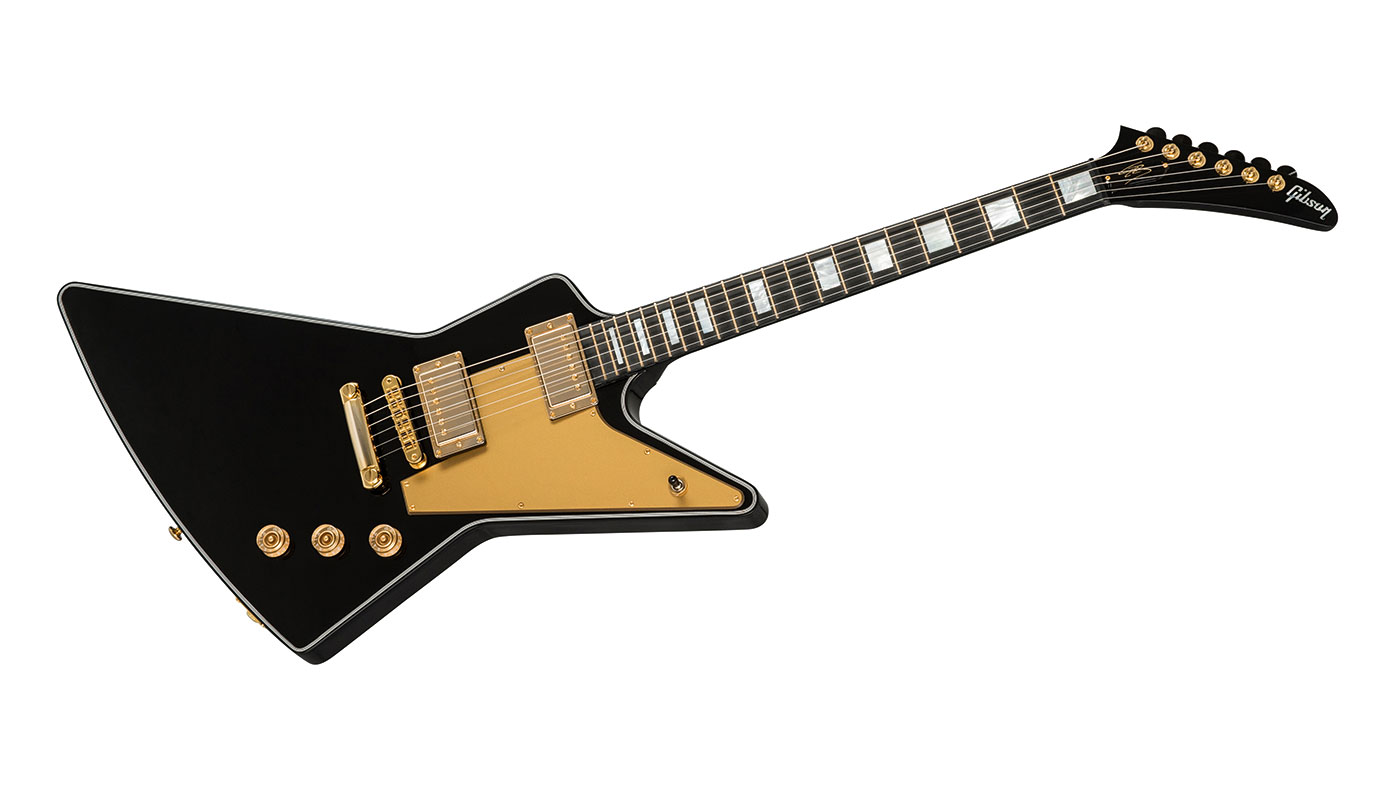Halestorm: “You have to be willing to work at something and then draft and redraft, then finish it, and then throw it away”
Lzzy Hale and Joe Hottinger on their cathartic album, Vicious

Whether your creative crisis comes in the form of a purgatorial funk, in which no good ideas are forthcoming, or guised as a mushrooming self-doubt, with a million angsty panics infesting your head like termites, it comes, and when it does there’s no escaping it. No one is immune and so there are all kinds of motivational materials to help you pull through; bromides such as ‘Perfect is the enemy of done,’ and so on.
And if it gets really bad, well, there are TED talks, happy pills and yoga. But, if there’s a lesson to be taken from speaking to Halestorm’s guitarist/vocalist Lzzy Hale and guitarist Joe Hottinger about the writing and recording process for the hard-rockers’ fourth album, Vicious, it’s that sometimes you just have to be told what to do. Enter, Nick Raskulinecz...
You try to convince yourself. But we were rehashing the same subjects, unexciting guitar parts
Having produced albums for Alice In Chains, Rush and Deftones, Raskulinecz’s ear for box-office rock tone is unimpeachable, but he also knows when a band aren’t hitting their straps and how to get them going again. The songs Halestorm had written while touring 2015’s Into The Wild Life weren’t working so he told them so. The band knew that already; they just needed to hear it from someone else.
“I wanted to just write some fucking songs and get a record out as fast as we can; keep this train rolling,” says Hottinger. “That was summer, 2016, and so between then and December we ended up writing 10, 15 songs. They were good, y’know. It would have been just a fine Halestorm record but we knew it wasn’t [right] ...Like, you try to convince yourself. But we were rehashing the same subjects, unexciting guitar parts...”
“It was uninspired and we were bored with it,” says Hale, finishing Hottinger’s sentence. They do that a lot. Absent of Dr Phil’s diagnosis, the layperson might cite this as evidence of togetherness. Maybe, but it’s excitement, too. It’s only 11am in Gibson’s London HQ, but Hale has warmed to the theme and is exorcising the album’s troubled early history.
“Now, we’ve been going many years, we’re on our fourth record, we’re on a major label,” says Hale. “We’ve done a lot of things. We’ve toured the world. We’ve got a Grammy. It got to a point on this record to just do it, so we did it and we didn’t like it! We were like, ‘Wait a minute: do we know how to do this? Have we lost it? Have we peaked? Can we maintain this?’ And with all of us, all four of us, this band is so incredibly special to us. It’s so much more than a career choice; it’s an extension of us. You start thinking, ‘Man, do we deserve to be here? What happened?’ You go down that dark path.”
Who’s got a riff?
All of a sudden we really reconnected with who we are to each other, who we were as a band
Bands often talk about how they are just like family, but for Hale it’s true. Her brother, Arejay (pronounced, RJ) plays the drums. When the band was first put together in Red Lion, Pennsylvania, they’d kick out the jams in her parents’ basement. Damn the neighbours. Hale and Hottinger credit Josh Smith’s musicality on bass and keys to keep them harmonically on message.
Get the MusicRadar Newsletter
Want all the hottest music and gear news, reviews, deals, features and more, direct to your inbox? Sign up here.
Raskulinecz’s prescription played to these strengths. He would produce the album - with Halestorm sharing a Nashville zip code it was a no-brainer - and he instructed them to get in a room together and hash it out themselves. No riffs to tape and sharing later; just write, and what they wrote each day they recorded. That was a call to action.
“It was like, ‘Cool, fuck it!’” says Hottinger. “‘I want to hang out with you. Who’s got a riff?”
“All of a sudden we really reconnected with who we are to each other, who we were as a band,” adds Hale. “We started hearing all the personalities coming together and it was kinda reminiscent of the early days, being in my parents’ basement with all these guys trying to do it. Everyday, it was like, ‘Who’s got an idea?’ Faster? All right, let’s do it!’”

One step ahead
As a band who always play on the edge of the beat, daring to step ahead of it, the tempo of the Vicious sessions was key to capturing their live sound on tape, and that was what Raskulinecz was looking for.
The reason why it is propulsive and a little ahead is because of our live shows and the way that we perform
“The reason why it is propulsive and a little ahead is because of our live shows and the way that we perform,” says Hale. “It is always a little on edge and excited, because you’ve got that adrenaline going.”
The songs kept coming. Black Vulture was written in quick time with Brian Vodinh of Tennessee alt-metal act 10 Years. Vodinh was visiting on a free day. They saw some vultures picking at roadkill on the way to the studio and that was the title right there. With a weird Kashmir-type riff, it ended up opening the album.
“It was a fast thing. I was trying to not make it too Zeppelin in the bridge,” says Hottinger. Skulls saw Hale and Hottinger using guitars with P90s and playing so hard that Smith had to remind them they were going out of tune. ‘It’s out of tune? ...Cool!” laughs Hottinger. And then there’s the likes of Vicious, the title-track that charts the polarity between Hottinger and Hale’s influences to divine the quintessence of their sound.
“He was always a 90s kid. I grew up in the 90s but I was obsessed with the 80s, so when we first met we would trade CDs all the time, like, ‘Here! Listen to Cinderella’s Night Songs,’” says Hale. “We didn’t do that as a conscious thing. I think that’s us wearing our childhood influences on our sleeves.”

Fuzz therapy
Vicious was also an instance of gear-inspired songwriting, with Hottinger’s newly-acquired Manson MC-1, with its onboard ZFex Fuzz Factory and Sustainiac Pro, giving him a tone that all but jimmied open his brain for a glut of ideas to spill out. That guitar was the one.
[The Manson MC-1...] you’re not just playing guitar like all the other guitars, this one is like a sound machine
“It fucking blew my mind,” he says. “Like, ‘Holy shit! This is this next-level guitar.’ You’re not just playing guitar like all the other guitars, this one is like a sound machine. I think the next 10 songs we wrote were just tones off that and two of them ended up on the record - White Dress and Vicious. I found some fuzz tones and that writes a million songs, just having a new sound like that. Things just start falling out.”
Halestorm brought everything they had to the studio, complementing Raskulinecz’s already formidable suite of amps. There were Bogners, a Marshall Silver Jubilee, a 60s-era Laney Klipp, and a Kemper that they used for clean delay tones. There were a lot of layers. Hottinger got a lot of use out of his one-watt Marshall JTM1 Offset. It was left to Hale to bring the nuclear option: her 100-watt Marshall 1959RR Randy Rhoads signature, a modded JMP 1959 Super Lead so loud it could take paint off the walls.
“It was loud when we used the Bogners and the Friedmans, but when we plugged that Marshall in you could hear it in the control room,” says Hottinger. “It was shaking the wall. It was fucking awesome.” Isn’t that what being in a rock band is all about - hanging out, keeping the energy going and making noise? That’s therapy right there. And another thing about a creative crisis is that it doesn’t last forever and once it’s gone it’s hard to remember it was ever there.
“You have be willing to work at something and then draft and redraft, then finish it, and then throw it away,” says Hale. “That’s what I learned on this record: I can draft and redraft cos I’ve realised coming back into this that I am absolutely not precious about anything that I do. I got quick at doing that on this record because we were recording as we were writing. Everything was very much in the now. We found our mojo again making this record. We came out the other end as different people, and we came out swinging.”

Sworn to the dark
Lzzy’s second signature Explorer is the ebony sibling to her first white and gold model…
“It’s very similar to the first one, so it’s the same thing with the 57 Classic pickups,” says Lzzy on her new signature Gibson Explorer. “The one thing that I ended up doing differently was that, for the fretboard, it’s Richlite instead of rosewood. I made that switch because I wanted to be kind of environmentally conscious, but I was nervous about it, like, ‘Is this going to change everything and I’m not going to like it?’ They made me a prototype and when I compared it to my original, my white Explorer, the OG, it was so different, which I loved - because I didn’t want to make the same guitar. As far as the tone, I am able to switch out both of these guitars live depending on what song I want to use it for. This isn’t a big fatty. I think it’s a 60s [profile]. Yeah, it’s awesome. Gibson’s been really good for me. A lot of people think that it’s an instrument and it’s a product but, no, it’s so much more than that.”
Jonathan Horsley has been writing about guitars and guitar culture since 2005, playing them since 1990, and regularly contributes to MusicRadar, Total Guitar and Guitar World. He uses Jazz III nylon picks, 10s during the week, 9s at the weekend, and shamefully still struggles with rhythm figure one of Van Halen’s Panama.
"Reggae is more freeform than the blues. But more important, reggae is for everyone": Bob Marley and the Wailers' Catch a Fire, track-by-track
“Part of a beautiful American tradition”: A music theory expert explains the country roots of Beyoncé’s Texas Hold ‘Em, and why it also owes a debt to the blues












